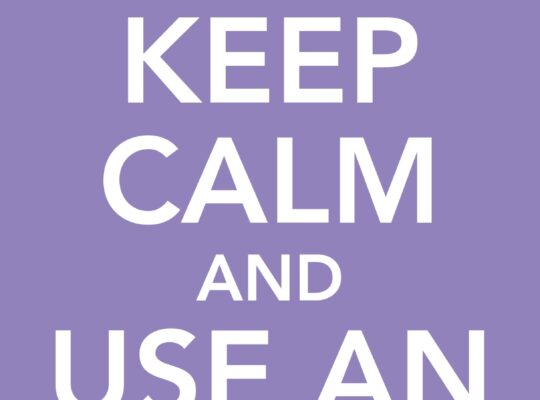Black and White Thinking Part 2
Here’s part 1 in case you missed it.
Do you ever find yourself assuming the worst-case scenario? Or jumping to conclusions? Only to find out later that neither are true?
We all probably do that sometimes, especially if we’re really stressed or in a highly unusual situation. It’s when that’s your go-to reaction that it can leave you feeling dejected, helpless, clueless, frustrated etc.
If you have a history of broken relationships or job losses, this type of thinking may be at the root of your issue. It’s a sneaky self-sabotage tactic that many are unaware of.
If you often find yourself exhibiting these patterns, then you may be a black and white thinker. It’s a common phenomenon so don’t beat yourself up if you are. There are ways to deal with it.
For black and white thinkers, it may seem safe to view life this way because things can be neatly put into one of two categories. It’s actually very limiting because the gray zone opens up many more possibilities, often ones that haven’t been thought of before.
There’s More than Meets the Eye to Perfectionism and Catastrophizing
Perfectionism is a form of this all-or-nothing thinking that comes second nature to a lot of people. A perfectionist can be nothing short of perfect. A 99 on a test is not good enough. It must be 100. The highest rating in a job performance review must be achieved. If not, it’s viewed as failure. Perfectionists must win the game or else they see themselves as a loser. It’s the best or nothing at all.
Not only does this type of thinking cause stress, it’s often unrealistic and unkind to yourself.
Black and white thinkers not only often miss the big picture, they hyper-focus on one narrative, bypassing all others. They jump to the extreme conclusion, not looking for anything in between.
Let’s say your friend cancels plans with you. If you are a black and white thinker you might immediately jump to the conclusion that they don’t like you anymore. That’s why they cancelled. Immediately you jumped to the worst possible scenario. How about other options like they got sick? Or their loved one got sick or an emergency meeting came up? The possibilities are endless. It doesn’t mean the worst is true.
Catastrophizing is another form of this type of thinking. It’s thinking in extremes. If something minor goes wrong, a person with this mindset will exaggerate: “This is a total disaster!” Your home getting hit by a tornado is a total disaster.
Or “This is the worst day ever!” Really? We all have bad days but the worst? That’s probably an exaggeration. For some people their communication style is littered with exaggerations. That may or may not mean they are a black and white thinker. If your go-to is always to think the worst, then that is a clue for all or nothing thinking.
The good news is once you can catch yourself thinking like this, there are ways to deal with it. They’re all free and don’t require therapy! Just an open and honest mind. And a willingness to change. If you’ve seen the disasters it’s created in your life, then hopefully an incentive to change is a given.
10 Tips to Stop Black and White Thinking
How to Stop Thinking Like This
- Look at other Possibilities – as with the example above if your friend cancels, don’t jump to the worst-case scenario. List other things that could have happened. You might be surprised when you see your list! And hopefully take away some anxiety as you start to see the worst is most likely not true.
- Come up with the best-case scenario – why does the worst-case always have to be true? It doesn’t and more than likely it isn’t. Think of all the good things that could happen, not the bad. This will counteract jumping to conclusions as well as dampen catastrophizing.
- Do you Have Proof – that what you think is happening really is? If it really is, then ok, what did you do last time it happened? How did you work through it? Put some logic into the mix to dial down the fear to enable you to see solutions to move forward.
- Shift your extreme words [always/never, best/worst, everyone/no one etc.] to “gray” words – go with sometimes, maybe, most of the time, probably etc.
- Counteract the negative with some positive – if it’s true that you have a difficult co-worker, it may not be true that therefore you need to give up and quit. What is positive about your job? It’s true that one person may be difficult, but others are nice, you like your actual job etc. There may be some negative that is true, but there’s also some positive that is true. Balance it out.
- It’s not all bad – instead of being hard on yourself in a certain situation and thinking that you are an utter failure, what have you done right in your life? There has to be something! As with gratitude there’s always something to be thankful for even if it’s waking up this morning, there has to be something that’s good in your life. Or something that you are good at. Find that and focus on it.
- Use the Diffusing Technique – move from assessing the situation in an extreme manner to a softer version by what’s called diffusing. Instead of thinking you can’t possibly do something soften it with, “I’m flexible enough to” or “I’m willing to.” Make concessions. See what you are capable of doing instead of ruling it all out. Instead of immediately assessing a situation to be the best or the worst, see it as “I’m noticing that,” or “I’m thinking/feeling that.”
- Advice for a friend – my personal favorite in almost any situation because it works! If your friend or relative was going through a similar situation, what advice would you give them? Because you are removed from the situation you are less likely to view it in extremes.
- Dose this benefit me – to think this way? If you don’t get the job that you wanted and immediately jump to you are the worst person ever, how is that thought helping you? Not to mention it’s not very kind to yourself! It will only make you feel worse, not free up your mental bandwidth to search for solutions.
- Notice it – the first step to change is awareness. To correct your thinking, first you must catch yourself thinking in extremes. Then you can employ any of the techniques listed above.
Polarized thinking, or thinking in extremes, is used to divide people. Hence, it’s a common tactic in politics. There is no healthy reason for you to view your life in polarization as it leads to exclusive thinking. Things must fit into one category or another instead of seeing the range of possibilities in between. Either/or choices often result ignoring all the options in between. That’s when the self-created disasters in your life can stack up. It’s best not to limit your life like that. There are so many in-betweens in life. That’s why we have the colors of the rainbow!
If you’re not sure if you engage in black and white thinking and you don’t want to ask anyone lest you “expose” yourself, then ask yourself. Ask your intuition.
If you don’t know what your intuition is saying to you, then it’s time to learn. It truly is your super power, your best gift. It won’t steer you wrong – when you listen and execute!
Do you want to learn to develop your super power? CLICK HERE to find out more.
Many of my clients have said that they want to learn how to develop their intuition. Because of that, I developed this easy-to-follow do it at your own pace, online course. It’s packed with tips, hacks and how-to exercises.
If you want to confirm that you have it, learn how to listen to it, how to talk to it and how to trust it start by CLICKING HERE.
Once you start listening to your intuition, you’ll be amazed how much your life clicks into place. Then you can truly start enjoying yourself and get what you want out of life!
CLICK HERE to find out more






